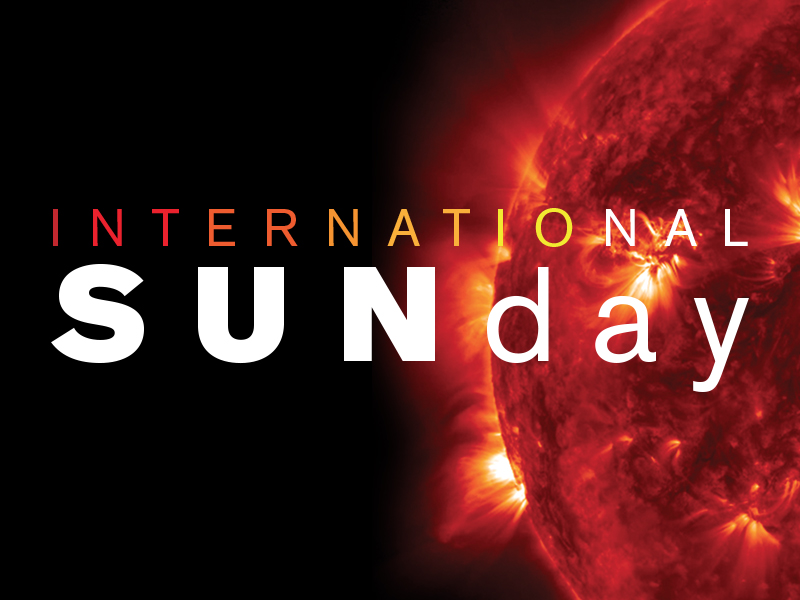See the Sun in a new light at Museum’s International SUNday event, June 23
For immediate release ‐ June 13, 2019
Contact: Jon Pishney, 919.707.8083. Images available upon request

(RALEIGH, N.C.) — Learn more about our amazing star, the Sun, when the North Carolina Museum of Natural Sciences hosts International SUNday on Sunday, June 23, noon–3:30 p.m. Safely view the Sun through a solar telescope, hear about how the Sun and other stars affect life on planets, and about current solar science missions. International SUNday is held annually on the Sunday nearest to the summer solstice, which is the day with the most hours of sunlight during the entire year, marking the beginning of summer in the Northern Hemisphere. The event is free.
SOLAR OBSERVING ON THE TERRACE
1:30-3:30pm (weather permitting)
Safely look at the Sun through the Museum’s special “Hydrogen-Alpha” telescope — which highlights fascinating surface features and solar storms — on the Rooftop Terrace of the Museum’s Nature Research Center. With Patrick Treuthardt, Assistant Head of the Museum’s Astronomy & Astrophysics Research Lab.
TALKS IN THE SECU DAILY PLANET THEATER
12:30 p.m. — “Living with the Sun: How Stars Affect Life on Planets”
The Sun affects life on Earth in several ways, from providing heat and energy that life needs to survive, to threatening health and technology with intense radiation and solar storms. Smith will discuss how life continues to thrive under our Sun, as well as how the Sun affects our ability to travel into deep space, and up to the point of the Sun’s eventual death in about 5 billion years. She will also share some highlights from current research on other stars and their potential for hosting habitable worlds. With Rachel Smith, Head of the Museum’s Astronomy & Astrophysics Research Lab and Associate Professor, Appalachian State University.
1 p.m. — “NASA’s Missions Exploring the Sun”
More than 20 missions are studying the Sun, its atmosphere, and its influence on the Earth. From America’s first satellite, Explorer I — which studied regions of solar wind captured near the Earth — to the Parker Solar Probe, which is flying through the Sun’s outer atmosphere, we’ll look at these solar-related missions and what we have learned and continue to learn from them. With Tony Rice, NASA/JPL Solar System Ambassador.
While clouds may limit observation of the Sun, the talks will happen rain or shine, and the Museum’s Astronomy & Astrophysics Research Lab will be open beginning at noon, with astronomers and students available to talk with visitors about the Sun and current solar scientific exploration.
The North Carolina Museum of Natural Sciences in downtown Raleigh (11 and 121 W. Jones St.) is an active research institution that engages visitors of every age and stage of learning in the wonders of science and the natural world. Hours: Monday–Saturday, 9 a.m.–5 p.m., and Sunday, noon–5 p.m. General admission is free. For more information, visit naturalsciences.org.

